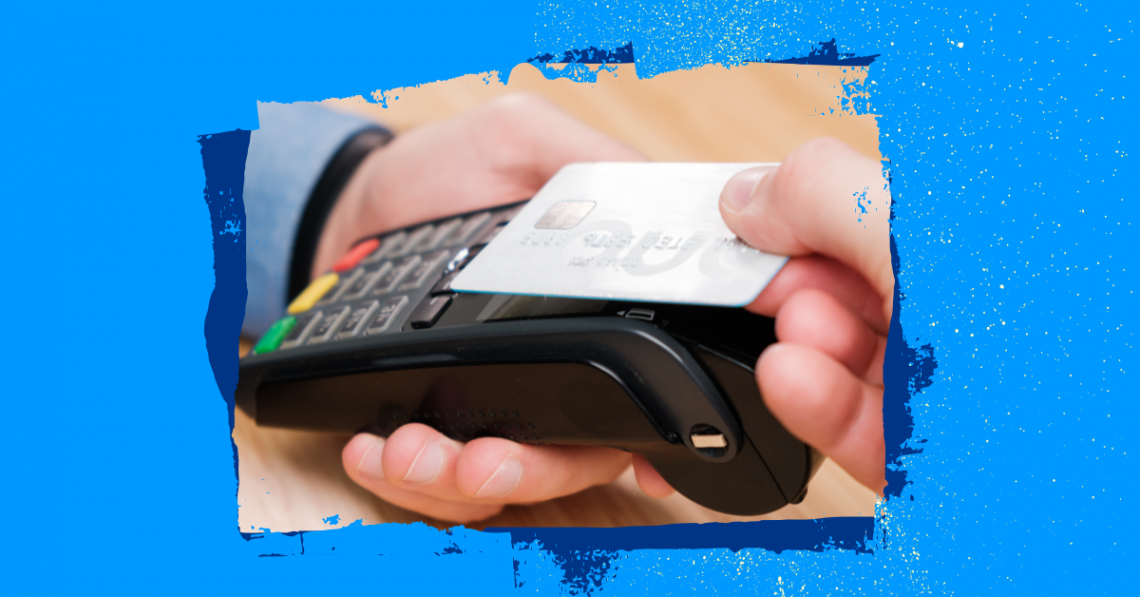If you have a brick-and-mortar store, you might not realize that people may be unhappy with your payment experience – and that can cost you sales (more on this later). For now, here’s a fun fact – the first credit card reader was created in 1979, and the majority of terminals today still use that original technology. They run a transaction and print a receipt — that’s it. If you’re using an old-school credit card swiper, your billing practices are decades old and, frankly speaking, bad for business. Upgrading your credit card terminal can be just what you need to improve the customer experience and improve your customers’ perception of your business.
In this article we’ll explore some signs it’s time to consider checking out the new payment processing terminals on the market today.
Table of contents
Which credit card terminal is right for your business?
There are two general types of payment terminals that you can leverage to process credit card transactions. Identifying which terminal is right for your business primarily depends on your business type.
Countertop credit card terminal
If you already have a credit card terminal, chances are your business currently uses a countertop terminal. These types of terminals are perfectly suited to a brick-and-mortar retail store or a professional business that takes telephone payments. However, they have limitations. This payment terminal requires a direct physical connection to your telephone line or to the internet. Due to this, it is limited to sitting in a single area in your building.
Wireless credit card terminal
A wireless payment terminal has all of the functionality of a traditional terminal but doesn’t require a physical landline phone or wired Internet connection. Instead, you can utilize your WiFi or 4G connection to process transactions. Therefore, it allows you to take your payment terminal on the go or simply bring it to your customers in-store. This is especially beneficial if you operate a field-based business, such as a home services business, or run a restaurant. Additionally, you can use it for business events.
How to know when it’s time to upgrade your credit card terminal
Your terminal doesn’t accept all major credit cards
If your terminal doesn’t recognize one or more popular credit card brands you risk losing customers. While some shoppers might be willing to use another card to complete their purchase, others might not bother with their purchase and go to a competitor.
Your terminal doesn’t recognize the latest payment technology
You should have a terminal that accepts near-field communication (NFC) payment forms via a wireless data transfer.
To clarify, NFC payment devices can include smartphones, tablets, smartwatches, and new credit cards. Most new terminals come equipped with NFC functionality. If your current terminal isn’t equipped to accept these types of payments, it’s time to upgrade because you’ll lose sales to competitors that do. According to a study on payments, 42% of US consumers stop a purchase if their favorite payment method isn’t available.
In the last year, the U.S. has grown to become the second-largest market for mobile payments with $465.1 billion worth of mobile payment transactions, which will grow to $698 billion in 2023. The reality is a large portion of consumers want to pay with these payment methods! You might offer digital payments online, but it’s important to offer them in-store too. Customers expect consistent experiences no matter how they choose to interact with your business. Make the customer experience consistent across all your sales channels and give your customers what they want: to pay their way.
Painfully slow card processing times
If your payment terminal is taking a lifetime to complete a transaction, causing congestion and long lines, it’s time to upgrade. This slow processing time often results from outdated hardware or software. The terminal might also have become damaged or worn out from years of everyday use.
You’re limited to staying behind the counter
Desktop credit card machines that are connected by an Ethernet cable are enough to meet the needs of many businesses that only take payments behind a counter. However, many different types of businesses can benefit from a wireless credit card terminal.
If you want to have the option to accept payments at customers’ doors, at conferences, or even simply somewhere other than behind the counter in your building, then you should consider investing in Wi-Fi and 5G-enabled terminals that give you the freedom to sell from anywhere.
Your terminal can only accept payments
Now, you might be thinking that’s exactly what a payment terminal is designed to do. However, as your business grows tracking sales, refunds, and outstanding payments through pen and paper isn’t sustainable. By leveraging a payment terminal that integrates with an all-in-one Experience Marketing platform like Birdeye allows you to run your business more efficiently.
For example, you can:
- View a list of all transactions with details of amount, status, and more
- Track aggregated metrics for all paid transactions, refunds, and paid out
- Filter the information as needed to stay on top of your sales and outstanding payments
Easy customer payment method
Birdeye Payments accepts all major credit cards as well as Apple Pay and Google Pay. With multiple ways to collect payments, customers will appreciate the convenient shopping experience your business can provide.
The best credit card terminal upgrade for your business
With Birdeye Payments Card Reader your business will be fully equipped with a modern, top-of-the-line device that works through your Wifi and accepts all major payment types. You’ll be equipped to accept NFC payments, increase revenue, and efficiently manage and streamline payment transactions in one platform. Birdeye Payments Card Reader is just one of the many reasons why more than 200,000 businesses use Birdeye to grow their business through happy customers.
To get a better understanding of the different types of digital payments, check out our free digital payments guide by clicking the banner below.

Originally published









